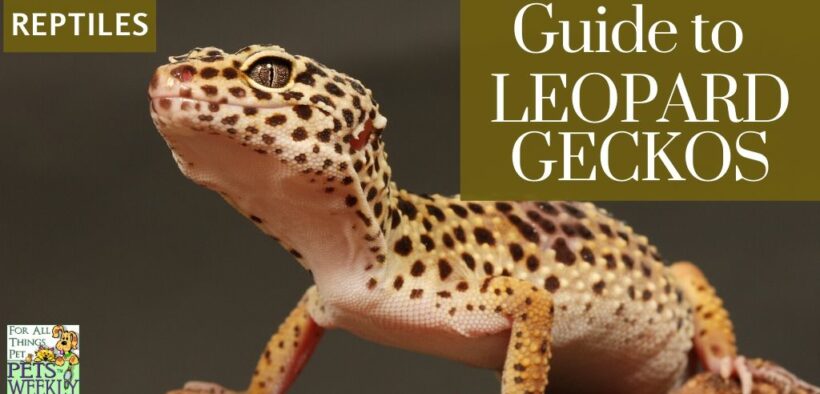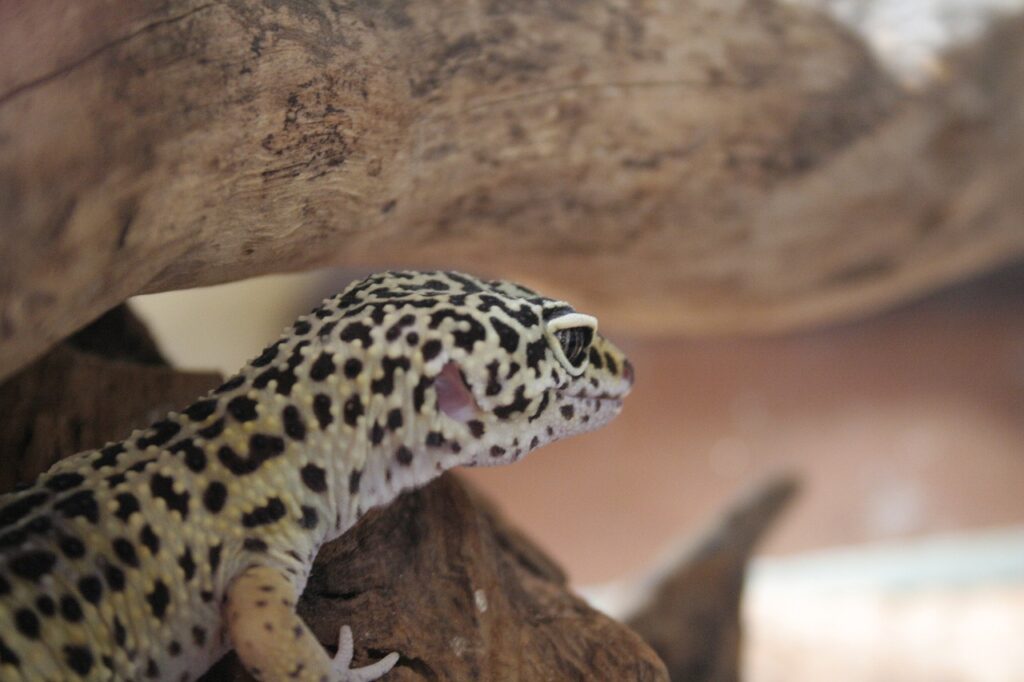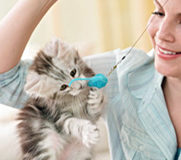A Guide To Your First Leopard Gecko
Share

Feeding Your Leopard Gecko
Just like other ectotherms, leopard geckos have slow metabolisms and only need to eat a few times a week.
Leopard geckos hunt insects in the wild, and in captivity, you need to provide them with live food as well. Some live foods include:
- Adult Crickets (for adult lizards), medium-sized crickets, or pin-head crickets (for hatchlings). These are available at most feed stores.
- Mealworms (darkling beetle larvae) – available at most feed stores.
- Super worms (the larvae of another beetle species)
- Silkworms
Crickets, Mealworms , super-worms and silk worms can also be bought online at reputable sites. This is often the cheaper option, though you may have to buy in bulk. Consider purchasing a Cricket Keeper to keep crickets alive and healthy.
Never feed insects to your gecko that you find outdoors. Many of these have been exposed to dangerous toxins, which can then transfer to your gecko.
The expression “you are what you eat” holds true for leopard geckos as well as people.
The live insects raised in pet stores or other places are often kept in high densities and filthy conditions, and they may eat things such as cardboard, paper and their dead tankmates. If you feed these insects to your gecko as soon as you get them home, your gecko will essentially be eating the same things.
To ensure that your gecko is getting the proper nutrition, you may want to care for the insect prey for a few days and feed them high nutrition food to make sure they pass on the health to your geckos.
When you bring crickets, mealworms or superworms home, it is best to store them in a separate tank with an egg carton or paper towel tube for cover and a piece of apple, carrot or potato for nutrition moisture.
In addition to the fruit or vegetable, you should provide the insects with a high quality food that has been formulated for your leopard gecko.
They will also eat bread, vegetable scraps, or any other leftovers you wish to provide them with. Cereal or high nutrient fish food may also be appealing to your gecko.
TIP: If your gecko is not eating their typical fare, you can try feeding them Live Waxworms. These grubs live in beehives and consume wax and honey, making them sweet to the taste.
Wax worms are essentially candy to leopard geckos, and while they can encourage a sick gecko to eat, they should not be fed to your gecko frequently as they are very low in nutrition. Just as a person will not do well on a diet of junk food, nor will a leopard gecko do well on a diet of wax worms.
Handling Your Leopard Gecko

Leopard geckos generally become friendlier the more you take them out and hold them. They may be skittish at first, so you may want to sit on the floor when handling a new or untamed gecko.
As you feed and take care of your gecko, they will learn to recognize you anytime you come close to the tank, and they may even try to climb the walls of the tank, begging to be taken out.
Leopard geckos are personable and rewarding pets, and can live as long as 20 years. If you would like a small quiet companion to spend your time with, a leopard gecko may be the right choice for you.










